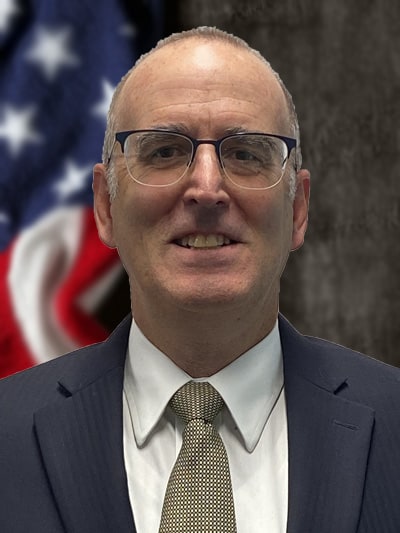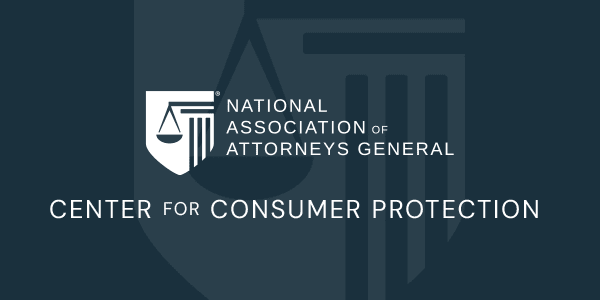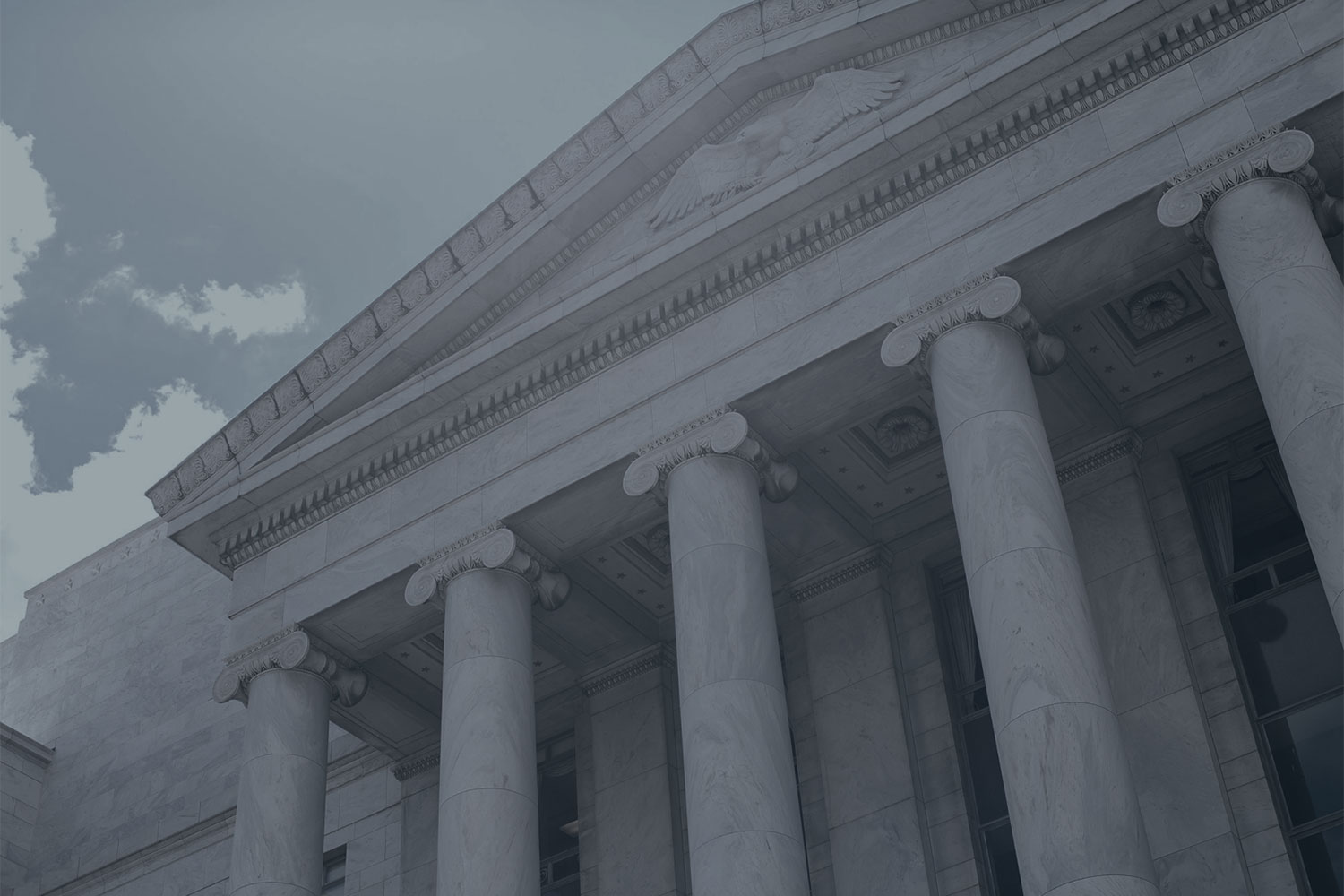Independent compliance monitors have become an increasingly common tool for state and federal law enforcement authorities over the past 20 years. This article will briefly discuss the history and uses of compliance monitors and then review issues related to monitor qualifications, selection of monitors, scope of monitoring agreements, and the monitor’s relationship with the government and with the subject company.
Significant use of independent compliance monitors began in the mid-1990s with settlements negotiated between federal criminal prosecutors and corporate defendants.1 Monitorship settlements became more common at the turn of the century with the collapse of Enron and other high profile cases of corporate misconduct,2and their use in criminal and civil cases continues to grow. The practice offers advantages to both sides. Corporations avoid criminal prosecution and convictions that could destroy the company and lengthy, expensive civil litigation with an uncertain outcome.4 The government can require systemic changes in corporate operations and culture and rely on a third-party to supervise the changes at the corporation’s expense.5
During this time, state attorneys general were also using multistate investigations and settlements to reform corporate misconduct at an industry level. In 1998, 46 state attorneys general negotiated the Tobacco Master Settlement Agreement (MSA).6 The tobacco manufacturers agreed to pay a minimum of $206 billion to the states over 25 years and also agreed to fundamental changes in tobacco advertising and other business policies and practices. Another example was the 2002 Microsoft antitrust settlement with nine state attorneys general and the U.S. Department of Justice (DOJ), reforming Microsoft’s alleged anticompetitive conduct to create more competitive browser and software development markets.7
These industry-wide settlements required state attorneys general to devote significant resources to enforcement. For example, for the past 20 years, almost every office has had one or more lawyers responsible for monitoring and enforcing the Tobacco MSA, including the business-practice provisions. Accordingly, it was only a matter of time before state attorneys general incorporated the use of monitors into multistate settlements to supervise compliance with new industry-wide standards or complex executory terms imposed on individual companies.
Following the crash of the national housing market and an investigation into mortgage servicing and foreclosure practices, 49 states and the federal government secured a $25 billion settlement in 2012 with the five largest U.S. banks.8 The National Mortgage Settlement (NMS) provided significant monetary and debt relief for affected homeowners and required stringent reform of mortgage servicing standards. To ensure compliance, the state attorneys general and federal partners appointed North Carolina Commissioner of Banks Joseph A. Smith Jr. as compliance monitor for a 3½-year term.
The NMS’s broad scope was particularly suited to management by an external monitor. The settlement involved mortgage servicers that accounted for over half of the market, resulted in over $50 billion in gross dollar relief to more than 640,000 families around the country, required banks to comply with over 300 servicing standards, and involved enforcement of a new federal law and laws of 49 states. 9 Monitoring a settlement of this breadth would have presented significant administrative and financial challenges to state and federal authorities. As an external monitor, however, whose expenses were paid by the banks, Smith provided continuity over his term and possessed the authority and flexibility needed to hire and supervise “a small army of professionals.”10 As a result, he was able to track on a timely basis the banks’ compliance with consumer relief and servicing requirements and to provide transparency by filing regular public reports with the court.11
Shortly after the NMS settlement, state attorneys general turned their attention to the national for-profit school industry. Thirty-seven state attorneys general joined together in 2012 following reports that for-profit schools were engaging in a wide range of bad acts including abusive recruiting practices, false and misleading advertising regarding transferability of credits and student employment rates, and the use of unscrupulous lead generators. State investigations of this sector are ongoing and have generated multiple settlements at the national and state level that have included monitoring requirements.12
Standards
Three separate sets of guidelines have been published on monitor selection and scope of duties.
Beginning with the “Morford Memo” in 2008,13 the DOJ has issued multiple guidelines in criminal cases on the method of selection, scope of duties, and duration of terms for monitors, laying out “basic principles” for monitor agreements.14 In 2016, drawing from the Criminal Division’s experience, the “Delery Memo” established principles and procedures for selecting monitors in civil settlements and resolutions.15 These memoranda will be referred to collectively as the “DOJ Memos.”
The American Bar Association (ABA) approved “black letter” Standards for Monitors in 2015 following three years of work by a task force of criminal justice lawyers, judges, and experts.16 The ABA Standards provide comprehensive guidelines for selecting a monitor and for establishing and conducting the monitorship.17
The most recent indicator of the growing use of monitoring was the establishment of a monitors’ trade association. The International Association of Independent Corporate Monitors (IAICM) issued a Code of Professional Conduct in December 2016. The IAICM Code is “congruous” with the ABA Standards, relying on the ABA’s definitions and other terms. Accordingly, the analysis in this article will rely primarily on the DOJ Memos and the ABA Standards.
What do monitors do?
While a monitor’s specific responsibilities and authority are established by court order or settlement agreement, a monitor’s job generally is to create and supervise compliance programs that remediate the corporate misconduct targeted by a government investigation.18 As one analysis noted, “What better way to ensure that a company stay on track than to embed an independent monitor at headquarters to oversee the company’s progress?”19 To that end, monitors often engage in compliance audits and, in some cases, hire an accounting firm as part of the monitoring team. The goal of these activities is not only to ensure corporate compliance during the monitor’s term of office but also to ensure longer-lasting public benefits by changing the corporation’s ethical culture.20
Who serves as a monitor?
To date, monitors used by state attorneys general have been former state regulators or law enforcement officials supported, typically, by other legal and accounting professionals. The DOJ Memos and ABA Standards provide that entities can also serve as monitors.21
Qualifications
The Morford Memo mandates that compliance monitors be selected “based on the merits” as the first of its nine principles and states that, at a minimum, the selection process should produce a “highly qualified and respected person or entity based on suitability for the assignment and all of the circumstances” and without potential and actual conflicts of interest.22 The DOJ Memos and ABA Standards both specify that a monitor should not affiliate with the company for at least one year after the monitorship’s end.23
ABA Standard 24-2.4 on “Selection Criteria” expands on the qualification provisions in the DOJ Memos in significant ways. In judging qualifications, the Standard looks for expertise in the relevant industry and subject matter. Because monitorships often involve companies or industries with national operations, the Standard requires examination of the full monitorship team to ensure there are sufficient resources to do the job. The Standard recognizes the need for continuity and stresses that a monitor candidate commit to serving the entire monitoring term.24
ABA Standard 24-2.4 also elaborates on who should not be a monitor. The Standard understandably excludes former government employees with prior involvement in the matter giving rise to the monitorship, individuals involved in the corporate activity at issue, and persons involved in any compliance program related to the wrongdoing if the program failed to work.25 The Standard identifies factors that are not disqualifying but should be considered in weighing qualifications, including prior monitor work for the company, prior non-monitor work for the company unrelated to the wrongdoing depending on its significance, nature and timing, prior affiliation with a firm that provided professional services to the company during the time of affiliation, and any other factor that could bias judgment or give the appearance of bias.26
The two individuals selected by state attorneys general to monitor multistate settlements satisfy these qualification criteria. In the National Mortgage case, the states recommended Smith, who served as North Carolina’s banking commissioner from 2002 to 2012. In the Education Management Corp. (EDMC) multistate, for-profit school settlement, former U.S. Associate Attorney General Thomas J. Perrelli was chosen as the “administrator,” the term chosen in that settlement. Both Smith and Perrelli were highly respected within regulatory circles and among those working in and representing the banking and for-profit school industries, respectively.27
Selection
The Morford Memo states there is no one method that should necessarily be used to select a monitor.28 Building on elements of the Morford Memo, subsequent DOJ memoranda elaborate further on the selection process. The “Breuer Memo” directs the corporation to provide a slate of three or more monitor candidates in criminal cases; the Delery Memo recognizes that in some civil cases the government may propose a slate.29 Both memoranda direct that a DOJ screening or standing committee review the slate and select the monitor or request a new slate.30 Both memos permit a litigation team to request departures from the selection procedure.31
The ABA Standards eschew a single process, noting only that both the company and the government should have significant roles in the selection process and that the process should encourage consideration of a broad range of candidates. The Standards encourage the government, when possible, to announce its search for a monitor so that interested applicants can apply. The Delery Memo also recognizes the option of using a public application process.32
State attorneys general have not used a formalized monitor-selection process. Rather, monitor selection and scope of duties have been a significant part of settlement negotiations, with the state attorneys general taking the lead in proposing candidates. The NMS specifically named the compliance monitor and contained detailed provisions regarding the monitor’s operations, including standard of conduct, employment of additional professionals, compensation, and qualifications of any replacement, if needed.33 The EDMC administrator likewise was specifically named in the EDMC Consent Judgment (CJ), and, in the event of a dismissal or vacancy in the position, a replacement would be “appointed by agreement of EDMC and the Attorneys General.”34
Scope and parameter of monitoring agreements
Monitoring agreements often come at the end of extensive and contentious government investigations or litigation. The appointment of a monitor should start a new phase in the relationship between the government and the company, moving from investigation to enforcement. While acknowledging that a monitor must understand the circumstances that led to his or her appointment, the Morford Memo makes clear that “[t]he monitor’s mandate is not to investigate historical misconduct.”35 Rather, the monitor’s role is to “address and reduce the risk of recurrence of the corporation’s misconduct.”36
Both the Morford Memo and the ABA Standards recognize the key role played by court orders and settlement agreements in defining the monitor’s responsibilities and authority. The Morford Memo looks for a sweet spot where the monitor’s duties are neither too narrow nor too broad.37 The ABA Standards call for the order or agreement to define clearly the monitor’s responsibilities, authority, goals, and scope of duties.38 Both the Morford Memo and the Standards acknowledge the need to set a defined term of service and allowance for extensions or early termination.39
In practice, extensions have been required in cases where recurring violations have been found.40 The authors have not identified any state attorney general cases where a monitorship was terminated early. The EDMC CJ authorized the attorneys general to extend the administrator’s term for up to two years upon a showing of “justifiable cause.” Such determination is subject to EDMC’s right to challenge the basis for the extension and seek injunctive relief relative thereto. Justifiable cause is defined in the agreement as “a failure by EDMC to achieve and maintain substantial compliance with the substantive provisions of the Consent Judgment.”41
The ABA Standards recommend that the order or agreement require the monitor to prepare a work plan at the outset of the monitorship in consultation with the company and government.42 Because it is not an order or contract, a work plan can fill in gaps left by the settlement terms, provide the company with certainty and predictability, yet allow the monitor flexibility to adapt to changing circumstances.43
The NMS contained extensive provisions regarding the duties and responsibilities of the compliance monitor and a very detailed framework for the work plan but still provided for the development of additional elements by the monitor in consultation with the monitoring committee and servicers. The settlement addressed the monitor’s access to information, reporting, compensation, duration, violations, right to cure, enforcement, and confidentiality, among other issues. The EDMC CJ also contained detailed provisions addressing these issues. The negotiation of work plans often involved an assessment of costs and benefits of monitoring tools such as mystery shoppers and software that searches and analyzes marketing audio files.
Relation to government and corporation
One of the primary advantages to the government of monitorships is that all costs are paid by the company.44 Even though the monitor is engaged and compensated by the company, the monitor owes the company no obligations or duties. The DOJ Memos and the ABA Standards both stress that a monitor is independent of the company and the government.45 Even if the monitor is an attorney, the monitor does not have an attorney-client or agency relationship with either side.46
This independence raises difficult questions about the company’s proprietary and confidential information. A monitor will have access to company information and employees as reasonably necessary to fulfill the monitor’s obligations, with such access rights usually specified in the court order or settlement agreement.47 The ABA Standards direct monitors to take reasonable measures to protect a company’s proprietary and confidential information. However, both the Morford Memo and the Standards call for scheduled, written reports to the government and the court that contain the monitor’s findings, conclusions, and recommendations.48 The Standards recommend that the court order or agreement state whether these reports are confidential or public,49 but such confidentiality provisions may conflict with state public record laws. If a report is public, the Standards wisely urge the monitor to consult with the company and government to protect against disclosure of sensitive or disparaging personal information and proprietary business information.50
The NMS and EDMC settlements both have detailed provisions granting the companies the ability to designate confidential material and requiring the government to notify the companies if it determines it is legally required by court order, subpoena, or open records laws to disclose information the company has designated as confidential. The companies are permitted a short window – 10 calendar days in the NMS and 10 business days in the EDMC CJ – to seek a protective order or stay of production. The EDMC CJ expressly authorizes the sharing of confidential information with other law enforcement agencies.51
Regarding monitor reports, the NMS required the monitor to confer with the servicers and monitoring committee prior to issuance of reports and to provide an opportunity for written comments. Final reports were submitted to the court and the parties and published online. The EDMC CJ requires the monitor to prepare both a non-public and a public report and provides the parties with an opportunity to review and comment on drafts of the reports.52
Conclusion
To date, the use of monitors by state attorneys general in multistate settlements has resulted in successful implementation of national consumer settlements while reducing enforcement costs for the states. Given these advantages, state attorneys general are likely to increase the use of monitors, both at the state and multistate level.53 As the practice expands, state attorneys general will bring the collective perspectives and experiences of their offices to addressing these and other issues related to this important and evolving enforcement tool.
Endnotes
*The views expressed in this article are the authors’ own and do not necessarily reflect the views of their organizations.
- See Richard Lissack et al., Monitorships, in The Practitioner’s Guide to Global Investigations 28.2.1 & n.8, http://globalinvestigationsreview.com/benchmarking/the-practitioner’s-guide-to-global-investigations/1079360/monitorships. (The first recognized monitorship in a DOJ criminal settlement was in 1995 in connection with Consolidated Edison’s sentencing for disclosure failures following a steam-pipe explosion.).
- See Chaka Patterson & Erica Jaffe, Corporate Monitors: Looking Back and Looking Forward, A.B.A. White Collar Crime Committee Newsl., Summer/Fall 2016, at 1, https://www.americanbar.org/content/dam/aba/publications/criminaljustice/wccn2016_
patterson.authcheckdam.pdf; Alex J. Brackett & Katherine Mims Crocker, The Past, Present, and Uncertain Potential of Corporate Monitors 2 (Washington Legal Foundation, Critical Legal Issues Working Paper No. 202, 2017).http://wlf.org/upload/legalstudies/workingpaper/07-14-2017_BrackettCrockerWP.pdf. - See, e.g.,Patterson & Jaffe, supra note 2, at 1 (“This field of corporate monitors is ripe for continued growth and expansion.”); Gary F. Giampetruzzi et al., Not Finished with You Yet – The U.S. Government Extends Its Deferred Prosecution Agreement with Biomet, Inc., Again Underscoring the FCPA Risks in Life Sciences, Lexology (Mar. 26, 2015), https://www.lexology.com/library/detail.aspx?g=d24e9f0e-d930-4772-8054-b6aa1de30c86 (In 2014, DOJ entered into 19 publicly disclosed corporate deferred prosecution agreements involving monitors in FCPA cases, an increase of nearly 25 percent over the 2013 total and more than double the number 10 years before.).
- See Am. Bar Ass’n, Monitors Standards, Introduction (4th ed. 2015), https://www.americanbar.org/groups/criminal_justice/standards/MonitorsStandards.html [hereinafter ABA Standards]; Brackett & Crocker, supra note 2, at 2-3.
- See Veronica Root, The Monitor-“Client” Relationship, 100 Va. L. Rev. 523, 525 (2014).
- See Tobacco Master Settlement Agreement, https://www.naag.org/our-work/naag-center-for-tobacco-and-public-health/the-master-settlement-agreement/; Peter Levin, The ABCs of the Tobacco Master Settlement Agreement, NAAGazette, Nov. 6, 2007, at 1, https://www.naag.org/assets/files/pdf/gazette/1.2.Gazette.pdf.
- See Stipulation & Revised Proposed Final Judgment,United States v. Microsoft Corp., Civil Action Nos. 98-1232, -1233, (D.D.C. Nov. 6, 2001), https://www.justice.gov/atr/case-document/stipulation-65.
- See, e.g., Consent Judgment, United States v. Bank of Am. Corp., Civil Action No. 12-0361 (D.D.C. Apr. 4, 2012), https://d9klfgibkcquc.cloudfront.net/Consent_Judgment_Ally-4-11-12.pdf. See generally About the National Mortgage Settlement, Off. of Mortgage Settlement Oversight, https://www.jasmithmonitoring.com/omso/about-the-national-mortgage-settlement/ (linking to settlement documents).
- Joseph A. Smith, Jr., A Review and Assessment of the National Mortgage Settlement by Its Monitor, 21 N.C. Banking Inst. 29, 32-38 (2017). While the monitorship of the initial five banks concluded in March 2016, Smith continues to serve as monitor for subsequent consent judgments under the settlement’s structure with three additional banks. Id. at 29.
- Id. at 35.
- Id. at 35-36, 38.
- Successful state enforcement actions related to for-profit schools involving the appointment of compliance monitors include the 2015 $100-million multistate Education Management Corp. settlement involving 39 states and D.C., Iowa’s 2014 settlement with Bridgepoint/Ashford, and Kentucky’s 2015 settlement with Daymar College,. See Consent Judgment, Kentucky ex rel. Conway v. Educ. Mgmt. Corp., Case No. 15-CI-1202 ¶ 38 (Ky. Cir. Ct. Nov. 16, 2015), https://ag.ky.gov/pdf_news/edmc-consent-judgment.pdf; Assurance of Voluntary Compliance, In the matter of Bridgepoint Education, Inc., and Ashford University, L.L.C. (May 15, 2014), https://www.iowaattorneygeneral.gov/media/cms/Bridgepoint_Ashford_Iowa_Attorney_G_F0271005A595B.pdf; Consent Decree, Kentucky ex rel. Conway v. Daymar Learning, Inc., Case No. 11-CI-01016 (Ky. Cir. Ct. Sept. 10, 2015),https://ag.ky.gov/pdf_news/daymar-consent-decree.pdf.
- The “Morford Memo” was issued by then-Acting Deputy Attorney General Craig Morford following the public outcry when then-U.S. Attorney Chris Christie approved a $52-million, 18-month monitoring contract for his former boss (and former U.S. Attorney General) John Ashcroft in a medical device company settlement. See Memorandum from Craig S. Morford, Acting Deputy Attorney Gen., U.S. Dep’t of Justice, to Heads of Department Components and U.S. Attorneys, on Selection and Use of Monitors in Deferred Prosecution Agreements and Non-Prosecution Agreements with Corporations (Mar. 7, 2008), https://www.justice.gov/sites/default/files/dag/legacy/2008/03/20/morford-useofmonitorsmemo-03072008.pdf [hereinafter Morford Memo] (presenting nine “basic principles” for monitor agreements); see also Lissack et al., supra note 1, at 28.2.1. Prior to the Morford Memo, the U.S. Department of Justice had issued three memoranda providing guidance as to when a monitor should be appointed in connection with prosecution agreements. See Memorandum from Eric Holder, Jr., Deputy Attorney Gen., U.S. Department of Justice, to All Component Heads and U.S. Attorneys, on Bringing Criminal Charges Against Corporations (June 16, 1999), https://www.justice.gov/sites/default/files/criminal-fraud/legacy/2010/04/11/charging-corps.PDF; Memorandum from Larry D. Thompson, Deputy Attorney Gen., Dep’t of Justice, to Heads of Department Components, U.S. Attorneys, on Principles of Federal Prosecution of Business Organizations (Jan. 20, 2003), https://www.americanbar.org/content/dam/aba/migrated/poladv/priorities/privilegewaiver/2003jan20_
privwaiv_dojthomp.authcheckdam.pdf; Memorandum from Paul J. McNulty, Deputy Attorney Gen., U.S. Dep’t of Justice, to Heads of Components, U.S. Attorneys, on Principles of Federal Prosecution of Business Organizations (Dec. 16, 2006), https://www.justice.gov/sites/default/files/dag/legacy/2007/07/05/mcnulty_memo.pdf. The provisions in the McNulty Memo assessing corporate cooperation in determining sanctions were subsequently revised by then-Deputy Attorney General Mark Filip in 2008. See Memorandum from Mark Filip, Deputy Attorney Gen., U.S. Dep’t of Justice, to Heads of Department Components and U.S. Attorneys, on Principles of Federal Prosecution of Business Organizations (Aug. 28, 2008), https://www.justice.gov/sites/default/files/dag/legacy/2008/11/03/dag-memo-08282008.pdf. - In addition to the Morford Memo, see Memorandum from Lanny A. Breuer, Assistant Attorney Gen., U.S. Dep’t of Justice, to All Criminal Division Personnel, on Selection of Monitors in Criminal Division Matters (June 24, 2009), https://www.justice.gov/sites/default/files/criminal-fraud/legacy/2012/11/14/response3-supp-appx-3.pdf [hereinafter Breuer Memo] (providing additional detail on monitor selection process); Memorandum from Gary G. Grindler, Acting Deputy Attorney Gen., U.S. Dep’t of Justice, to Heads of Department Components and U.S. Attorneys, on Additional Guidance on the Use of Monitors in Deferred Prosecution Agreements and Non-Prosecution Agreements with Corporations (May 25, 2010), https://www.justice.gov/archives/dag/memorandum-heads-department-components-united-states-attorneys (adding tenth “basic principle” on resolving disputes between monitor and corporation). There is extensive scholarly commentary regarding the U.S. Department of Justice’s use of corporate monitors in the criminal context, especially involving large financial institutions and Foreign Corrupt Practices Act cases, where the use of deferred prosecution agreements has drawn particular interest. See, e.g., Cindy Alexander & Mark Cohen, The Evolution of Corporate Criminal Settlements: An Empirical Perspective on Non-Prosecution, Deferred Prosecution, and Plea Agreements, 52 Am. Crim. L. Rev. 537 (2015).
- Memorandum from Stuart F. Delery, Acting Assoc. Attorney Gen., to Heads of Civil Litigating Components, U.S. Attorneys, on Statement of Principles for Selection of Corporate Monitors in Civil Settlements and Resolutions (Apr. 13, 2016), https://www.justice.gov/oip/foia-library/asg_memo_statement_of_principles_corporate_monitors_civil_settlements/download [hereinafter Delery Memo].
- See ABA Standards, supra note 4, Table of Contents.
- For a review of the ABA Standards published soon after their promulgation, seeAmy Walsh, Is the Opaque World of Corporate Monitorships Becoming More Transparent? Bus. L. Today, Dec. 2015, 1-2, https://www.americanbar.org/content/dam/aba/publications/blt/2015/12/corp-monitorships-201512.authcheckdam.pdf.
- Morford Memo, supra note 13, Principle 3 & comment; Delery Memo, supra note 15, at 1; ABA Standards, supra note 4, Introduction.
- David A. Ring & Matthew Cvercko, The Compliance Monitor Dilemma, N.Y.L.J., April 3, 2017, https://www.law.com/newyorklawjournal/almID/1202782627850/?slreturn=20171128171803.
- See Morford Memo, supra note 13, at 2. The U.S. Department of Justice has, in addition to announcing principles guiding the selection of compliance monitors, issued extensive guidance for federal prosecutors in assessing capabilities of corporate compliance programs. This guidance is to be used in investigating a corporate entity, determining whether to bring charges, and negotiating plea or other agreements. The factors evaluated, commonly known as the “Filip factors,” “include the existence and effectiveness of the corporation’s pre-existing compliance program and the corporation’s remedial efforts to implement an effective corporate compliance program or to improve an existing one.” U.S. Dep’t of Justice, Criminal Division, Evaluation of Corporate Compliance Programs 1 (2017) (internal quotations omitted), https://www.justice.gov/criminal-fraud/page/file/937501/download.
- See Morford Memo, supra note 13, Principle 1; ABA Standards, supra note 4, Standard 24-2.1; see also Delery Memo, supra note 15, at 2 (term “monitor” includes any third party).
- Morford Memo, supra note 13, Principle 1; see also Delery Memo, supra note 15, Principle 1; ABA Standards, supra note 4, Standard 24-2.4.
- ABA Standards, supra note 4, Standard 24-4.1; Delery Memo, supra note 15, Principle 7; Morford Memo, supra note 13, Principle 1.
- ABA Standards, supra note 4, Standard 24-2.4.1. In contrast, the Delery Memo provides direction on filling monitor vacancies. See Delery Memo, supra note 15, Principle 8.
- ABA Standards, supra note 4, Standard 24-2.4.3.
- ABA Standards, supra note 4, Standard 24-2.4.4.
- Perrelli previously served as compliance monitor in the Iowa Attorney General’s settlement with for-profit school Bridgepoint/Ashford, which involved many of the same issues of concern in the EDMC multistate. The Kentucky Office of Attorney General selected the author, Robert E. Cooper, Jr., to serve as compliance monitor in Kentucky’s Daymar College settlement in 2015. In addition to serving as Attorney General of Tennessee, Cooper had extensive experience in higher education issues, including serving as a member of the for-profit school working group and executive committee on the 2012 QuinStreet/GIBill.com lead-generator multistate settlement and on the Standards Review Committee of the American Bar Association Section of Legal Education and Admission to the Bar.
- Morford Memo, supra note 13, Comment to Principle 1.
- Breuer Memo, supra note 13, at 3; Delery Memo, supra note 15, Principle 2. But see Breuer Memo, supra note 14, at 4 n.7 (if corporation has not proposed acceptable monitor candidates, government attorneys may provide a list of candidates to the corporation).
- Delery Memo, supra note 15, Principles 2-6; Breuer Memo, supra note 14, at 2-5.
- Delery Memo, supra note 15, Principle 9; Breuer Memo, supra note 14, at 6. But see Henry Cutter, Hui Chen Weighs In on DOJ’s Pilot Program, Monitorship Reviews, Risk & Compliance Journal (Nov. 7, 2017) (former compliance counsel expert at Fraud Section of DOJ Criminal Division proposes that monitors should be DOJ civil servants rather than hired from outside in order to develop experience and avoid excessive billing), https://blogs.wsj.com/riskandcompliance/2017/11/07/hui-chen-weighs-in-on-dojs-pilot-program-monitorship-reviews/.
- ABA Standards, supra note 4, Standard 24-2.1, -2.2; Delery Memo, supra note 15, Principle 2.
- See Consent Judgment, United States v. Bank of Am. Corp., supra note 8.
- See Consent Judgment, Kentucky ex rel. Conway v. Educ. Mgmt. Corp., supra note 12, ¶ 38.
- Morford Memo, supra note 13, Comment to Principle 4.
- Id. Principle 4.
- Id. Comment to Principle 4 (“Neither the corporation nor the public benefits from employing a monitor whose role is too narrowly defined (and, therefore, prevents the monitor from effectively evaluating the reforms intended by the parties) or too broadly defined (and, therefore, results in the monitor engaging in activities that fail to facilitate the corporation’s implementation of the reforms intended by the parties).”).
- ABA Standards, supra note 4, Standard 24-3.1.
- Id. at Standard 24-3.1, -3.2; Morford Memo, supra note 13, Principle 9.
- See e.g., Zimmer Biomet Holdings, Inc., Current Report (Form 8-K) (March 25, 2016), https://www.sec.gov/Archives/edgar/data/1136869/000119312516518185/d318910d8k.htm (noting extension of 2012 deferred prosecution agreement (“DPA”) and monitorship). The monitorship eventually terminated in 2016 with the statement that the monitor was unable to certify compliance with the DPA. Biomet subsequently was found to have violated the Foreign Corrupt Practices Act again and, in 2017, entered into another DPA, requiring an additional 3 years of monitoring. See Biomet, Inc., File No. 3-17771(Jan. 12, 2017), https://www.sec.gov/litigation/admin/2017/34-79780.pdf.
- Consent Judgment, Kentucky ex rel. Conway v. Educ. Mgmt. Corp., supra note 12, ¶ 49.
- ABA Standards, supra note 4, Standard 24-3.3.
- Walsh, supra note 17, at 2.
- ABA Standards, supra note 4, Standard 24-3.4.
- Morford Memo, supra note 13, Principle 2; Delery Memo, supra note 15, at 1; ABA Standards, supra note 4, Standard 24-4.1.1.
- For a useful analysis of ethical issues created by monitorships, see Root, supra note 5, (proposing creation of privilege protecting “monitor-‘client’ relationship”); Caelah Nelson, Note, Corporate Compliance Monitors Are Not Superheroes with Unrestrained Power: A Call for Increased Oversight and Ethical Reform, 27 Geo. J. Legal Ethics 723 (2014).
- ABA Standards, supra note 4, Standard 24-4.2.1.
- Morford Memo, supra note 13, Principle 5 & comment; ABA Standards, supra note 4, Standard 24-4.3.1.
- ABA Standards, supra note 4, Standard 24-4.3(4).
- Id.
- Consent Judgment, Kentucky ex rel. Conway v. Educ. Mgmt. Corp., supra note 12, ¶ 52.
- Id., ¶¶ 46–48, 53.
- Cf.Root, supra note 5, at 524 (noting that “[c]orporate compliance monitors are everywhere”).






